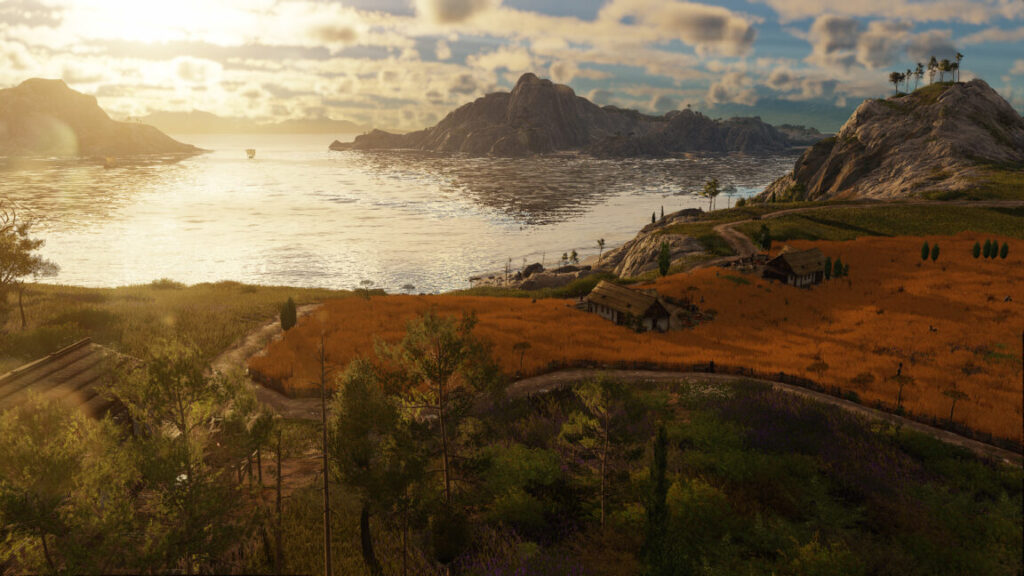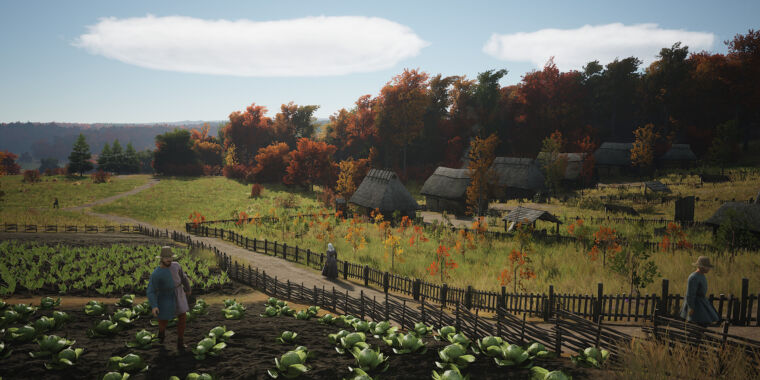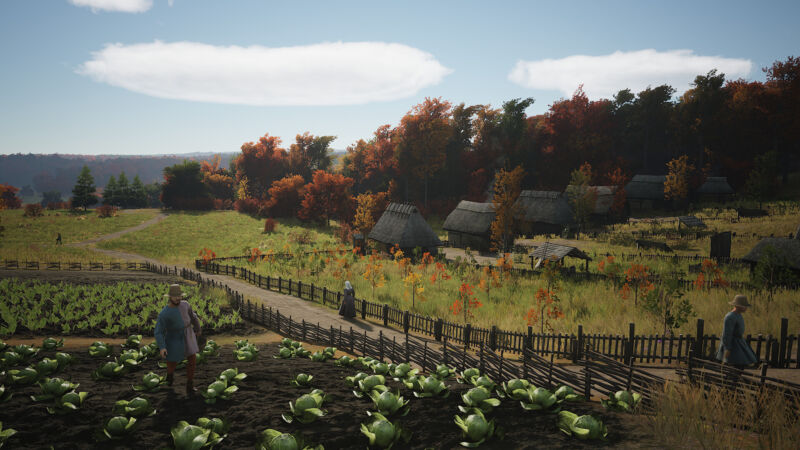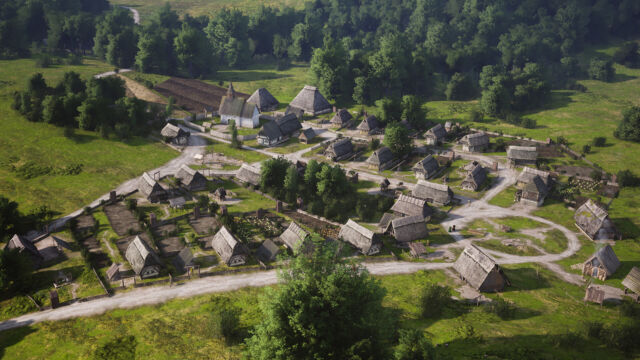Anno 117 Pax Romana hands-on: Gorgeous, deep, and tricky to learn
After a return to form in Anno 1800, 117 aims to seize an even bigger audience.
Anno 117: Pax Romana is, first and foremost, gorgeous to look at. Credit: Ubisoft
Ubisoft provided flights from Chicago to Rome and accommodation so that Ars could participate in the preview opportunity for Anno 117: Pax Romana. Ars does not accept paid editorial content.
There aren’t any games quite like the Anno series, and based on some hands-on time at a recent press junket, I can say that the latest entry has the potential to be an appealing on-ramp for history buffs and strategy game fans who haven’t explored the franchise before—provided players approach it with a lot of patience.
The previous entry in the series, 2019’s Anno 1800, was seen as something of a return to form by longtime franchise fans, who weren’t as thrilled with the futuristic entries that preceded it. It reportedly reached 5 million players, which is quite a lot for a PC-focused strategy title, so 1800 was a popularization moment for the franchise, too.
Anno 117: Pax Romana, due later this year, aims to build on that momentum and turn the franchise into a crossover hit. While the Anno games have long been popular with a certain crowd (strategy gamers in Europe, and specifically Germany, where the games are developed), its addictive gameplay and top-tier presentation have the potential to appeal with even more people, provided publisher Ubisoft makes the right choices.
Throughout its decades of history, I’ve dabbled with the Anno series of strategy games, but it has always been on my “someday I think I’ll really get into this” list. Last month, I attended a press junket where a preview build of the game was available to play for about three hours—a chance to see if it successfully follows up on 1800. In my time with it, I found that the bones of the game are promising, and the presentation is outstanding. That said, the new-player onboarding experience will have to improve for the game to find new audiences.
How an Anno game works
Anno games are part city builders, part supply chain simulations. Like many builders, you lay down roads, build critical infrastructure like firefighting structures, and develop your population in size and wealth. But all of that dovetails with systems of developing and harvesting natural resources, converting them into produced goods, and turning those produced goods into both wealth and further development for your settlements.
You have to pay careful attention to where you place things. For example, warehouses are needed to store goods that you’re gathering or making, and those warehouses have to be strategically positioned to allow the right goods to flow from one structure to another.
Ultimately, you build settlements on multiple islands, connecting them with trade routes and naval units. Natural resources can be island-specific, so your islands end up with specializations. On top of all that, there’s a story, and there are other, AI-controlled leaders scattered around the map you have to either coordinate or skirmish with.
The Anno games have a unique identity, and there’s a lot to learn for new players, even if those players have played other city builders or economic sims (though, of course, prior background won’t hurt). That said, it all becomes relaxing and smooth as butter once you learn it. The game won’t satisfy players who are looking for conquest or tactical combat, though, as that’s not an emphasis.
What’s new in 117
You could argue that the main selling point of Anno 117: Pax Romana compared to its predecessors is its setting; it’s one of the most requested settings and time periods by fans of the franchise, and it’s a natural fit for the game’s mechanics.
I’ll admit I was swept up in the game’s aesthetic presentation while playing it. As the rosy subtitle “Pax Romana” implies, this is the Roman Empire at its most idealized. The wheat fields practically glow golden-yellow, the citizens work and mingle while wearing gorgeous and colorful clothes, and the music swells and soothes with ancient vibes.
Sure, the actual Roman Empire had something awful to offer to counterbalance every positive image we have, but Anno 117 prefers an escapist fantasy, much like many prior entries in the franchise. This is a game about enjoying the idealized aesthetics embedded in our collective cultural memories while building something you’re proud of, not tackling thorny historical or moral realities. It’s more SimCity than Frostpunk.
All told, the game’s artistic and technical presentation is top-notch. It pulls you into the setting, which is further thematically reinforced with the resources and products you gather and produce, as well as some of the new mechanics and the occasional story-based dialogue prompts. The aesthetic experience is easily one of the strongest parts.
There are a few other selling points, too. First, there are new mechanics, like a religion system, a more robust research tree, and the return of ground-based military forces to go along with the franchise’s standard light inclusion of naval conflict. I wasn’t able to engage with the army aspect in this demo, but I did get to touch on the religion system and the research tree.
Shortly into founding the settlement on your island, you can build a temple to one of the game’s deities. Each deity provides bonuses that help you specialize your focus. For mine, I chose Ceres, the Roman goddess of agriculture and fertility. That gave me significant bonuses for my farms. If I had chosen Poseidon instead, my ships would have moved faster, among other things.
You can pick a Roman deity as a patron for your settlement. Samuel Axon
Compared to strategy games that make religion a major factor in how the game is played, this system wasn’t particularly robust or deep in the demo I played, but as I alluded to above, it was a nice way to reinforce the aesthetic and the themes in the game. Plus, it gives you a way to customize what you’re building in a fun way.
The research tree sprawls out in multiple directions, winding around on different tangents. In my time with it, it seemed to be composed largely of numerical bonuses to things like yields or ship speed and wasn’t too focused on introducing totally new mechanics. It’s a nice inclusion in terms of just giving you more customization and choice, but it’s by no means a game changer, and it doesn’t represent a fundamentally new approach to the game.
It’s also worth noting that you can now build diagonal roads and place buildings diagonally on them, allowing you to free yourself from the rigid grid. That said, I found that grids still seemed optimal in most cases, so this is a perk for beauty builders (which is totally valid!), but it won’t generally sway folks focused on efficiency.
You can place roads and buildings (like this farm) diagonally now. (Don’t judge my building placement—I’m still learning!) Samuel Axon
There’s one other major feature I didn’t get to try out during my time with the game. The developers say that players will be able to choose to build either in a Rome/Mediterranean-themed network of islands or a British frontier-themed area from the start. I was only able to try the former during this demo.
It’s still a bit hard to get into
For the Anno games to become as mainstream as the developer hopes, they’ll have to become much easier to learn and get into. Anno 1800 made strides here with its story-based tutorial, though that tutorial was also criticized for some unnecessary busywork and being a bit too involved for existing fans.
Unfortunately, I felt during my time with Anno 117 that the onboarding experience was a step back from 1800. Right off the bat, the tutorial instructed me to do something but skipped a crucial step with no explanation, causing five minutes of confusion. As I progressed, story content guided me further along with objectives, but key systems were left unexplained. Since I played 1800 a bit before, I was able to figure it out, but I still had to ask for help from a nearby developer to progress on two occasions. Another journalist sitting next to me who had no prior experience with the franchise seemed totally lost.
On the bright side, the game benefits immensely from a beautifully thought-out user interface, which is ordered in a logical and intuitive manner. It’s particularly strong at giving the player a sense of the impact of the choices they’re about to make—for example, by indicating with overlays on nearby buildings how placing a building in one spot might be more advantageous than placing it in another. To some extent, this makes up for the relatively anemic tutorial, as many (but not all) of the game’s most important concepts are intuitively obvious from the user interface alone.
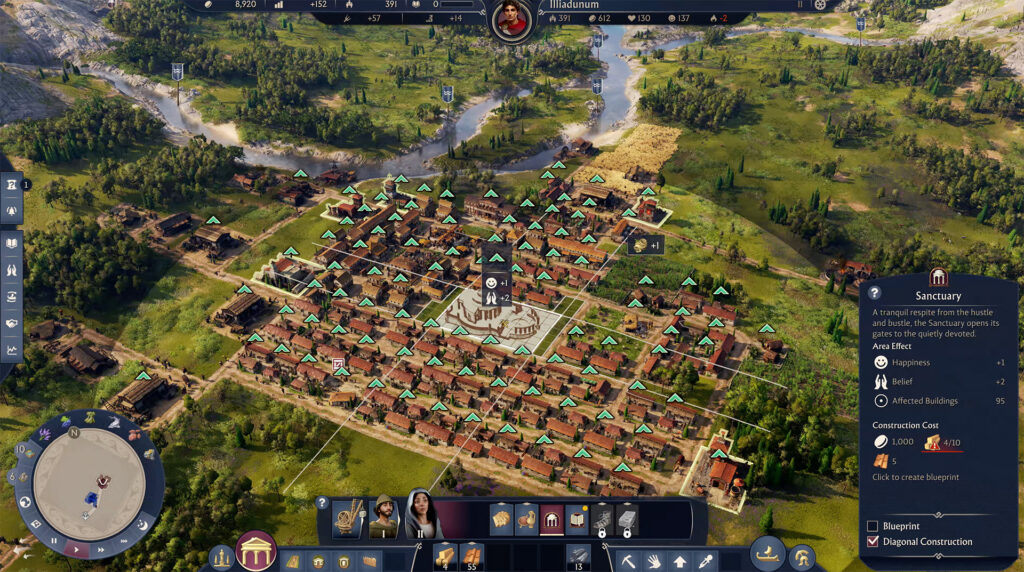
The UI does an excellent job of letting you know what the effects of your actions will be. Credit: Samuel Axon
That’s in stark contrast to another recent big-budget, mainstream strategy game release (Civilization VII), which offered robust onboarding tutorials but also had a user interface that at times failed completely to indicate to players what their choices meant.
Anno 117‘s mechanics themselves are intuitive once you’ve had the proper introduction, and I don’t think the game inherently needs to be difficult to learn. But the tutorial experience needs to improve to reduce that initial friction so new players don’t bounce off quickly. Anno 1800 may have been too heavy-handed here, but Anno 117 seems to overreact by going too far the other way.
The launch is months away, though, so there’s time to improve these things, and it wouldn’t take that much to do so. I’m hopeful, anyway.
Something for almost everybody
The Anno games scratch an itch that no other games do, and based on a few hours with a preview build, Anno 117 seems like a promising entry in that unique tradition.
Numbers-obsessed efficiency mavens can go quite deep with optimization to set up the best economic powerhouses possible, but the game’s systems are flexible enough to allow aesthetics-focused beauty builders to get creative and expressive instead—virtually any combination of those two approaches is viable, too.
The appeal is elevated by visuals that are definitely a cut above the usual for strategy, simulation, or builder games, and the Ancient Roman setting gives the game’s technical artists ample space to create an immersive experience.
Anno 117 doesn’t seem to reinvent the experience compared to 1800, but after the controversial attempts that preceded both of these titles, that may not be a bad thing. It’s fun once you get going—I found the minutes drifting away from me as I took in the sights and watched all the right numbers tick up at a satisfying pace because of my choices.
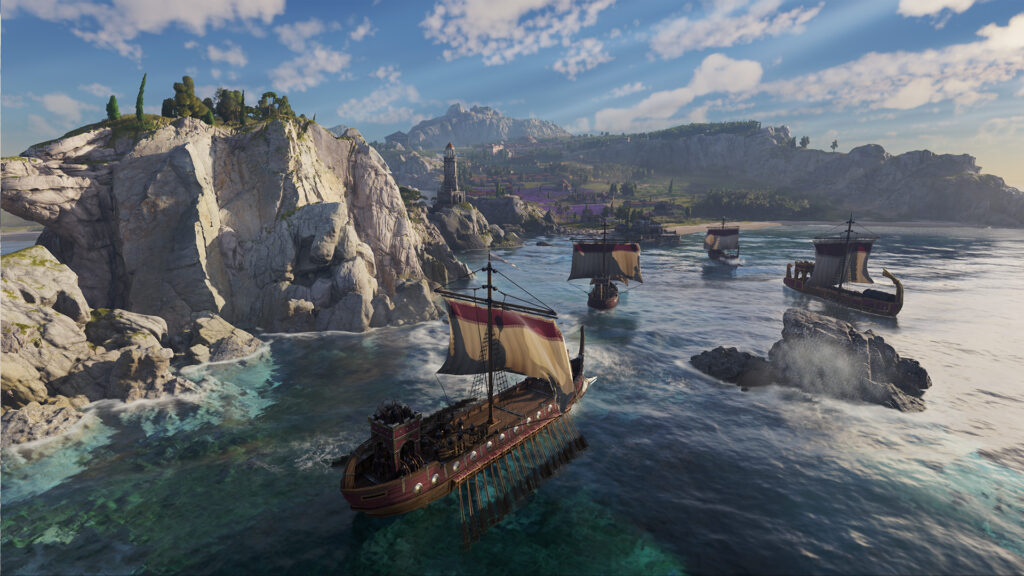
The combination of creative city building, economic simulation, and naval-based combat and exploration with strong visual presentation makes the Anno series’ special sauce. Credit: Ubisoft
I’m not part of the existing core audience for this franchise, so it’s hard for me to predict how they’ll respond to it—there are a lot of finer details they’ll be sensitive to that I’m not yet. My guess, though, is that longtime fans will probably be happy with this one provided it gets most of those things right, with the usual strategy-game sequel caveat that post-launch content has made Anno 1800 much more robust than Anno 117 is likely to be at launch. There’s promise here for newcomers, but Ubisoft Mainz will have to keep working on that tutorial and onboarding experience to really break the dam the way they hope to. That’s really my primary concern about this title.
We’ll find out how that goes when the game launches on Windows, PlayStation 5, and Xbox Series X|S sometime later this year. One way or the other, I intend to play more of it when it releases to see if this is the first Anno game that becomes an obsession instead of a passing interest.
Samuel Axon is a senior editor at Ars Technica, where he is the editorial director for tech and gaming coverage. He covers AI, software development, gaming, entertainment, and mixed reality. He has been writing about gaming and technology for nearly two decades at Engadget, PC World, Mashable, Vice, Polygon, Wired, and others. He previously ran a marketing and PR agency in the gaming industry, led editorial for the TV network CBS, and worked on social media marketing strategy for Samsung Mobile at the creative agency SPCSHP. He also is an independent software and game developer for iOS, Windows, and other platforms, and he is a graduate of DePaul University, where he studied interactive media and software development.
Anno 117 Pax Romana hands-on: Gorgeous, deep, and tricky to learn Read More »
